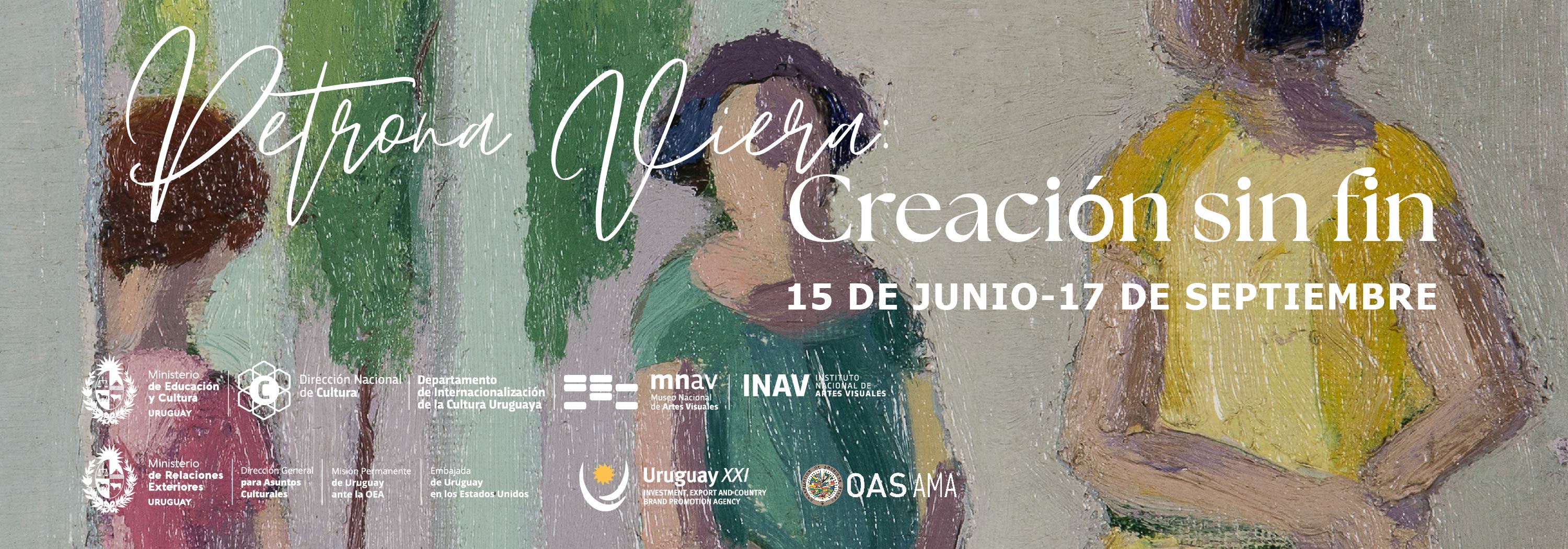
Petrona Viera: creación sin fin" (Petrona Viera: Endless creation)
On view June 15-September 17, 2023
The
exhibition "Petrona Viera: creación sin fin" (Petrona Viera:
Endless creation), at the Art Museum of the Americas (AMA),
represents for Uruguay and for us, at the National Museum of Visual
Arts (Museo Nacional de Artes Visuales-MNAV) in Montevideo, a true
joy as well as a challenging task. The selection of the twenty-six
paintings, from more than a thousand that are part of the MNAV
collection, aims to represent the thematic and technical trajectory
of the artist's tireless, singular and unrelenting creation.
Petrona Viera's (Montevideo 1895-1960) oeuvre came to be in the
context of the Uruguay's "modernization", which manifested itself in
the great social, political, and cultural changes that took place
within the region. From the artistic point of view, these changes
were displayed in the cheerful use of large colored surfaces, which
she incorporated under the guidance of her beloved tutor, Guillermo
Laborde. Consequently, Petrona joined the school that came to be
known as "Planismo," centering her work on the enthusiastic theme of
childhood (with its games and pastimes), the nude (an unusual choice
for women artists of the time), and, later on, in her landscapes,
with synthetic findings of abstraction, and, towards the forties,
through the technique of engraving.
Her singularity was
social as well, being Petrona, the daughter of a politician who
became president of Uruguay. Petrona was deaf from early childhood,
which prevented her from making herself understood through spoken
language, beyond the context of her family. She often attended
artistic events, notwithstanding her impossibility to take part in
the usual debates, a testament to her courageous attitude. Her work
constitutes a great dialog between herself and her perception of her
world, from the apparently closed and quotidian to the infinite
expansion of sandbanks, beaches, and horizons, through the
landscape.
Maria Eugenia Grau
National Museum of
Visual Arts
Curatorial and Research Area
La obra de Petrona Viera (Montevideo 1895- 1960) emerge en el
contexto de "modernización"
del Uruguay y de la región que se manifiesta en grandes cambios
sociales, politicos, culturales.
Desde lo artistico dichos cambios se
manifestaron en la utilización festiva de grandes planos de color
que incorpora con su querido maestro Guillermo Laborde.
Petrona se pliega asi a la escuela que dio
en llamarse "planista"
centrada en una tematica entusiasta de la
infancia con sus juegos y pasatiempos, el desnudo, género
poco habitual en mujeres artistas de su tiempo, luego en sus
paisajes con hallazgos sintéticos de
abstracción, y hacia los años cuarenta a través
de la técnica del grabado.
Su
singularidad tambien fue social, hija de
un hombre politico que llegó a ser
presidente de Uruguay. Petrona quedó sorda desde la primera
infancia lo que le impidió hacerse entender desde el lenguaje
del habla a excepción de su medio familiar. Se presentaba con
persistencia a eventos artisticos sin la
posibilidad de los debates verbales tan habituales, pero con
actitudes de valentia.
Su obra constituye un gran diálogo
entre su ser y su percepción de su mundo, desde lo
aparentemente cerrado- cotidiano a la expansión infinita de
arenales, playas y horizontes a través del
paisaje.
Maria Eugenia Grau
Museo Nacional de Artes Visuales
Area
de Curaduria e Investigación
Accessibility: This exhibition takes place on AMA's
second floor. The galleries are not wheelchair accessible. Restrooms
are located on the second floor. There is a flight of winding stairs
leading to the museum's second floor. For more information on
accessibility, please contact 202 370 0147 or artmus@oas.org


